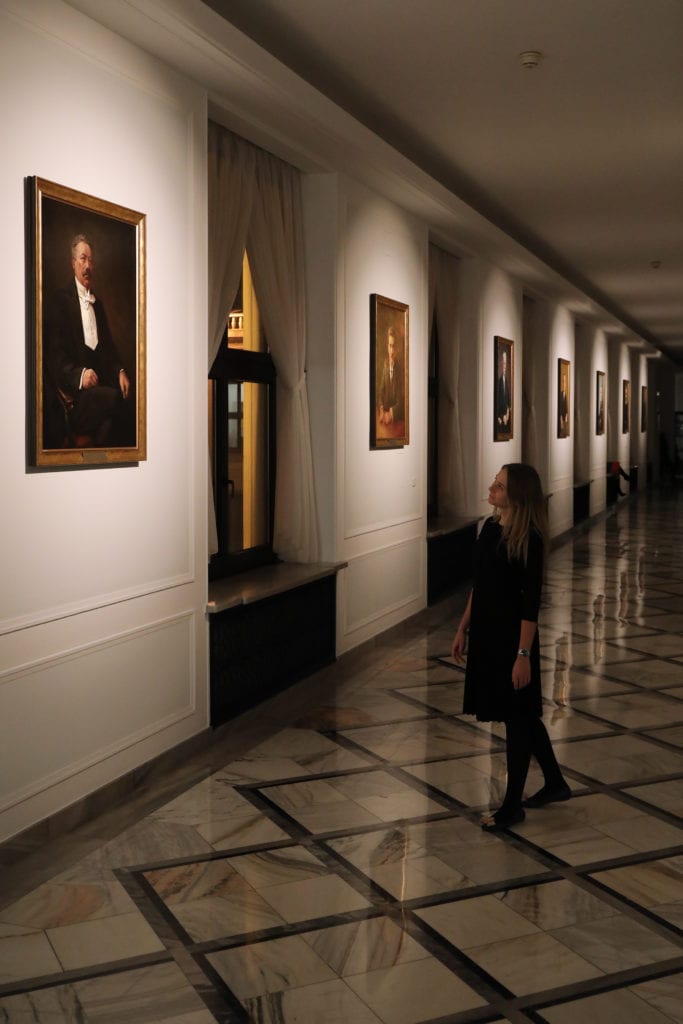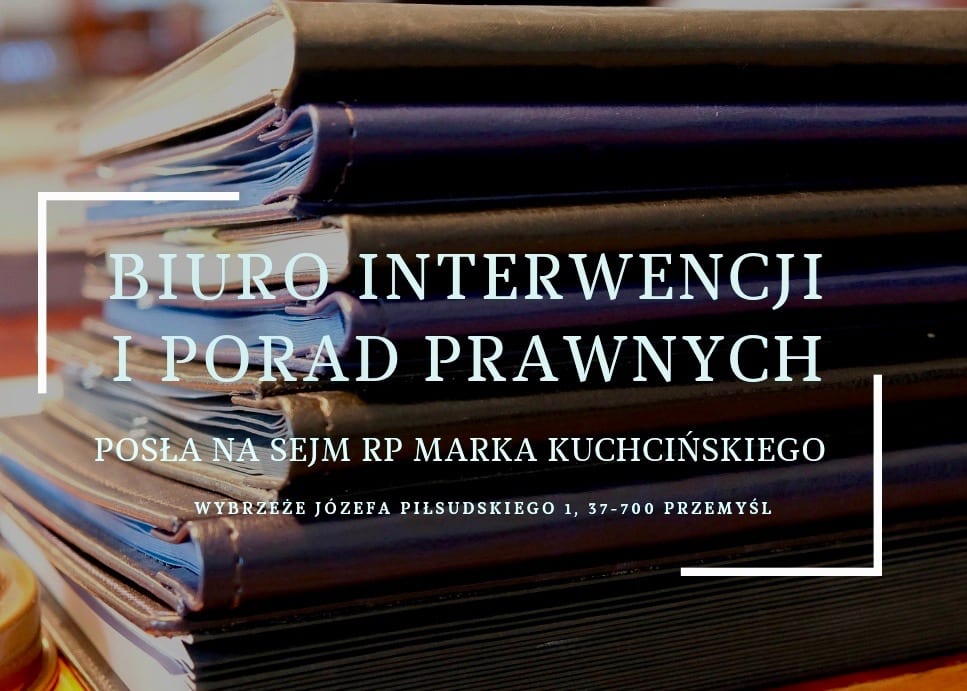A permanent exhibition featuring portraits of Marshals who held office during the interwar period was opened in the Sejm building. This is the first gallery of paintings in the history of the House, which in a unique way commemorates outstanding statesmen, reminding how important role they played in the formation and reconstruction of the independent Polish Republic.
Remembrance and tribute
Since 9 November 2018, the building at Wiejska Street is hosting an exhibition presenting painted images of the Marshals of the Sejm from the period of the Second Republic of Poland. The event is part of a series of activities related to the celebrations of the 100th anniversary of Poland's regaining independence and the 550th anniversary of the Parliamentarism of the Republic of Poland. The idea of the exhibition, as emphasized by the initiator of the project, Speaker of the Sejm Marek Kuciński, is to pay tribute to outstanding historical figures and to establish a dialogue with the past. The presence of seven portraits on the walls of the busy Sejm corridor undoubtedly encourages reflection and evokes the memory of eminent politicians who, in a difficult period, took upon themselves the burden of responsibility for creating the legal foundations for the functioning of the reborn Polish state. - We want to remember them, just as we want to remember all the parliamentarians who sat in the Sejm of the Second Republic, from 1919 to 1938, and those who represented the legislature during the functioning of the Polish Underground State," said the Speaker of the Sejm during the opening ceremony of the exhibition. - At the same time, we want to treat this gallery as the beginning of the Sejm's and Parliament's becoming a state patron of the arts. We are joining the group of institutions which fulfil such a role", said Marek Kuchciński during the opening ceremony, who also expressed hope that the works of art placed permanently in the Sejm would point to the relationship between the world of politics, culture and art, oriented towards cooperation Pro Publico Bono.
Seven exceptional
The exhibition presents all seven Speakers of the Sejm, who presided over the work of the House from 1919 to 1939. The postcard opens with a portrait of the Speaker of the Legislative Sejm, Wojciech Trąmpczyński, who held the position from 1919 to 1922. As a lawyer, he devoted particular attention to work on the adoption of the Constitution and the unification and codification of law. He was succeeded by Maciej Rataj, who also served (twice) as head of state: after the assassination of Poland's first president Gabriel Narutowicz (December 16-22, 1922) and after the resignation of President Stanisław Wojciechowski following the May Coup (from May 15 to June 4, 1926). In the post-May period, Rataj made attempts to restore legalism, ensure a balance between the executive and legislative branches of power, and defend the sovereignty of the Sejm. Next, the gallery depicts Ignacy Daszyński, who served as Speaker of the Sejm for the second term from 1928 to 1930. Daszyński energetically defended the dignity of the Sejm and tried to prevent violations of the rule of law, which earned him the title of "marshal of democracy. The next picture shows the Speaker of the Sejm of the third term, Kazimierz Świtalski, who took office in 1930 and held it for five years. He was a strong supporter of the April Constitution, passed in 1935, and the new electoral law. The fifth and sixth portraits show images of the Marshals of the fourth term. Stanislav Tsar held this position from 1935 until his death in 1938. In the last years of his political activity, he strove to increase the authority and ensure considerable freedom of action of the Sejm. After him, Walery Sławek accepted the position of Speaker and held it from June to November 1938. The gallery of portraits is closed by Wacław Makowski, Speaker of the Fifth Sejm from 1938 to 1939, who presided over the last session of the Sejm after the aggression of Nazi Germany against Poland. The session of the Sejm took place on 2 September 1939.
The power and immortality of art
The overriding idea of creating a gallery of portraits of marshals of the Second Republic of Poland was to have each likeness painted by a different Polish artist. This made it possible to create unique images comprising the collection of national art. Seven painters were engaged to accomplish this task. They were: Antoni Cygan, Janusz Szpyt, Wieńczysław Pyrzanowski, Łukasz Zedlewski, Stanisław Baj, Stanisław Chomiczewski and Ryszard Kalamarz. Antoni Cygan, who was responsible for creating the effigy of Marshal Wojciech Trąmpczyński, stresses that art - in this case a painted portrait - has an extraordinary power to resurrect and immortalize the likenesses of historical figures who deserve eternal memory. Art, unlike photography, gives room for a deeper and more insightful interpretation of what happened in the past. The fact that each of the portraits was painted by a different artist also gives the paintings the necessary individuality. The artists recalling the painting work do not hide their fascination with the portrayed. Among the qualities they perceived in the marshals appear especially unusual strength and charisma. - Something intrigued me in him. To me he was a living person, not a photograph, but someone I had already met. I began to read about him. He was a close associate of Józef Piłsudski, he did not expose himself, but rather worked in the background," says painter Wieńczysław Pyrzanowski about Kazimierz Świtalski. For some artists, personal issues also played an important role. Such issues are mentioned among others by Antoni Cygan, the author of the portrait of Wojciech Trąmpczyński. - He is a special figure, the first Marshal of the reborn Republic of Poland. He has his own distinguished place in history,' stresses the rector of the Academy of Fine Arts in Katowice.
Challenges and difficulties
The creation of a painting gallery of marshals was a unique, but also specific task. The authors of the paintings had a great responsibility. A portrait always involves many difficulties, both technical and psychological. Its essence is not only to render a physical likeness, but also to penetrate deep into and show the inner truth about the portrayed person. Not every artist in his painting career receives a commission for a historical portrait of the Marshal of Poland, which is why all the painters involved emphasize unanimously that this was a special event for them. The act of creation was preceded by intensive preparations. Each of the artists spent many hours browsing and analyzing available archival materials, which allowed them to get to know the portrayed figures as thoroughly as possible. Antoni Cygan emphasizes that the most important thing for him was to get acquainted with the photographic documentation. - I tried to approach it in such a way so as to look for unique features in each of them which I considered to be the most important for capturing the physicality of this figure", recalls the artist, who noticed an unusually strong and powerful personality in Marshal Trąmpczyński. This energy emanating from his person became the key to creating his likeness. Unfortunately, there were not many or insufficient source materials. This is mentioned by Stanisław Chomiczewski, who emphasizes that he was happy to undertake the task, even though it was not an easy one because of the scarce iconography. Sometimes the information we were able to obtain was incomplete. - The photos are very different. Some, especially the official ones, were very skilful in hiding the flaws and shortcomings," remembers Łukasz Zedlewski, the author of the portrait of Stanisław Czar. Pointing to the problems of old interwar photography Wieńczysław Pyrzanowski, the author of the portrait of Kazimierz Świtalski, emphasises the lack of the most important information a painter needs - color. In his opinion black-and-white photographs very much limit a full understanding of the past. The artist points out the great difficulty in guessing the color of the Marshal's eyes, which, as he stresses, plays a significant role in the artistic perception of the work. Despite the difficult task, all painters met the challenge and with great dedication created a "living" and extremely important portrait gallery. The success of this undertaking is confirmed especially by the fact that the images turned out to be extremely attractive also in the eyes of the living descendants of the Speakers of the Sejm, i.e. people who are the most strict in their assessments. All visitors of the Sejm corridor agree that the portrait gallery is an important and unique place.
Justyna Stasiek-Harabin, Portrait Gallery of the Marshals of the Sejm of the Second Republic of Poland, Artist and art, No. 29, 2019
Photo: Rafał Zambrzycki/ KS
Marek Kuchciński opened a gallery dedicated to the Marshals of the Sejm of the Second Republic of Poland



